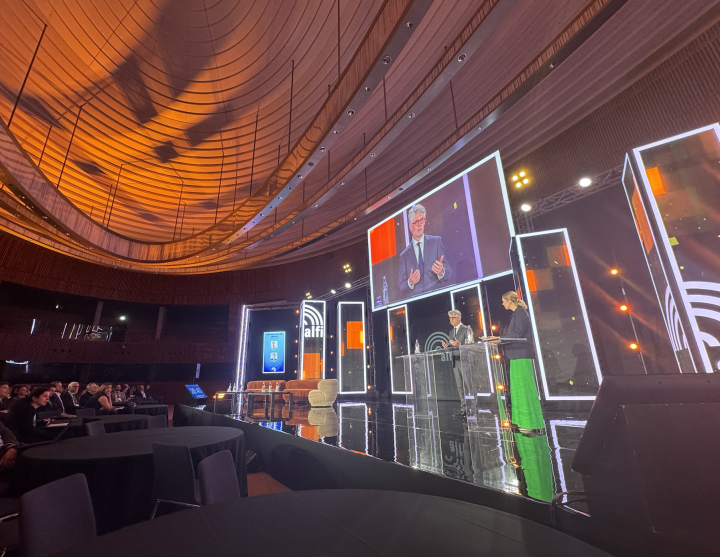
European regulators are seeking urgent clarification on how new long-term investment funds should be supervised, as an inconsistent application of rules across EU member states threatens to undermine a regime designed to give investors easier access to private markets.
The European Securities and Markets Authority (ESMA) has asked the European Commission for urgent guidance on how to apply the Eltif 2.0 framework, amid signs that supervisory convergence across the EU is lacking, Investment Officer has learned.
ESMA made the request to the European Commission earlier this week, according to two people familiar with the discussions, as per a so-called ‘Level Three’ consultation under EU financial regulation. This means the authority feels the need for clarification on supervisory interpretation issues that are emerging as more asset managers launch Eltifs as semi-liquid alternative funds targeting both professional and retail investors.
The European Commision now will have to update its guidance on the Eltif 2.0 framework.
The regulatory move highlights growing pressure on national supervisors to ensure consistent implementation of the updated European Long-Term Investment Fund (Eltif) regulation, which came into force in January 2024. While the revised regime has sparked a wave of new fund registrations, market participants currently face mixed interpretations from supervisors in different countries. As a result, asset managers still cannot market Eltifs across all EU member states, despite the European passport.
Diverging interpretations and gold-plating
Eligibility requirements and liquidity features are being interpreted differently across jurisdictions, sources said. Certain member states, such as France for example, currently only allow domestic-domiciled Eltifs to be offered in pension and insurance-related investment products, effectively blocking Luxembourg-domiciled Eltifs that are otherwise eligible for distribution under the EU passport.
When a member state imposes additional requirements beyond the agreed EU rules, the practice is referred to as gold-plating. For the CSSF, Luxembourg’s national supervisor, which oversees about 110 Eltifs—two-thirds of all such funds in Europe—this practice undermines the spirit of European regulation.
‘Too early to comment’
When asked by Investment Officer about ESMA’s push for clarification, CSSF director Marco Zwick said it was “too early to comment” and advised watching the space for future developments. ESMA itself did not respond to an email request for comment.
Addressing delegates earlier at the Alfi conference on Wednesday, Zwick touched on gold-plating concerns in the context of the European single market. He emphasised the importance of consistent rule application across jurisdictions and warned against re-examining work already approved by regulators. Specifically, he said the European passport should be seen as an opportunity, not a threat, and that jurisdictions should avoid second-guessing decisions already validated by the CSSF.
“The European passport is a huge opportunity. It should not be considered as a threat by any jurisdictions, and I think that’s very important if we want to make this work.”
Marco Zwick, director at the CSSF
“The European passport is a huge opportunity. It should not be considered as a threat by any jurisdictions, and I think that’s very important if we want to make this work,” Zwick said. “We should accept that there is a concept, that this concept is based on trust between regulators. At the end of the day, we need to avoid market fragmentation.”
Steady flow of new Eltif funds
ESMA’s request for Level Three guidance comes at a time when wealth managers and private banks are increasingly turning to Eltifs to give their clients access to private markets—such as infrastructure, private debt, private equity and real estate—in a regulated and EU-compliant format. The Eltif 2.0 regime has made the vehicles significantly more flexible, particularly for semi-liquid and retail-accessible structures, although market participants have also reported that not all doubts have been eliminated.
While many private market specialists were hoping for a significant number of new Eltif launches last year, the new fund type did take off with several dozen launches. According to the CSSF, as many new Eltifs were launched in 2024 as during the entire seven-year lifespan of the first-generation regime.
Last year’s discussions over the Level Two technical standards—where national supervisors expressed diverging views—contributed to delays in launches. Legal specialists said the Level Three process is not expected to cause major delays, unlike Level Two. Still, it may make issuers hesitant to promote their Eltifs across multiple jurisdictions, they said.
The Lamfalussy process
EU financial lawmaking follows the Lamfalussy process, a four-level framework. Level One involves the European Commission proposing legislation, which is then adopted by the European Parliament and the Council. Level Two focuses on developing technical standards for supervision.
Level Three comes into play during implementation, when national supervisors interpret and apply the rules differently, creating a risk of market confusion. Finally, Level Four allows the European Commission to initiate infringement procedures before the European Court of Justice in Luxembourg if member states fail to comply with EU law.